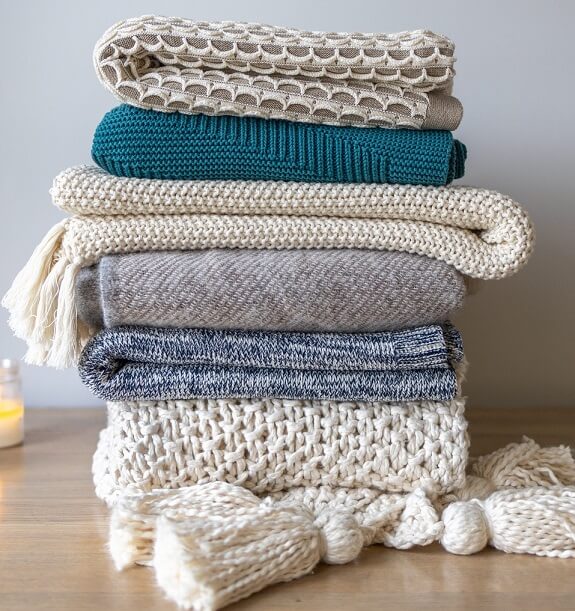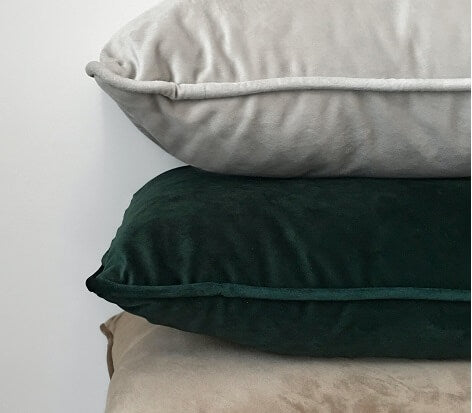Are you still sleeping on an old, worn-out mattress? If so, you may be putting your health at risk without even realizing it. The Dangers of Sleeping on an Old, or Worn-Out Mattress go beyond just discomfort – they can lead to chronic back pain, poor sleep quality, allergies, and even respiratory issues. In this blog post, we will explore the hidden dangers of sleeping on an old mattress and discuss the importance of recognizing the signs that it's time for a replacement.

Chronic Back Pain: More Than Just an Uncomfortable Sleep
An aged mattress lacking in support and firmness can become a primary contributor to enduring back pain. This type of pain is not merely discomfort; it significantly interferes with your day-to-day activities and diminishes your quality of life. A mattress that doesn’t maintain the natural alignment of your spine through the night forces your body into unnatural positions, placing undue stress on your back muscles and spinal joints. Over time, this continuous strain doesn't just vanish with the morning light but accumulates, leading to persistent back pain that can shadow you throughout your day.
The connection between inadequate sleep surfaces and back discomfort is well-documented, yet it remains an often overlooked aspect of health. When a mattress ceases to provide essential support, the midsection of the body can sink too deeply into the bed, throwing the spine out of alignment and straining the lower back. Additionally, an uneven surface full of lumps or dips from years of use can cause similar misalignments and stress on the body.
Addressing this issue is not just about alleviating immediate symptoms but preventing long-term damage to your musculoskeletal health. The impact of a worn-out mattress on your back's well-being is a critical concern that necessitates awareness and action. Ignoring these signs can lead to chronic conditions that might require professional medical intervention. Recognizing the role that a supportive and comfortable mattress plays in maintaining back health is the first step towards a pain-free lifestyle and uninterrupted, restorative sleep.
Poor Sleep Quality and Its Ripple Effects
When you're sleeping on a mattress that's past its prime, the impact on your sleep isn't just about tossing and turning. This scenario sets off a cascade of adverse effects on both your mental and physical health. Insufficient support from your mattress disrupts the natural sleep cycle, leading to fragmented sleep. This fragmentation can impair the body's ability to enter deep, restorative sleep phases, critical for physical recovery and mental processing.
As a result, you may find yourself waking up feeling anything but refreshed. This state of sleep deprivation doesn't stay confined to the bedroom. It seeps into your daily life, affecting your mood, concentration, and even your emotional resilience. The struggle to stay focused at work or school becomes real, as does the shortness of temper that often accompanies sleep deprivation. Moreover, the ongoing lack of quality sleep can weaken the immune system, making you more susceptible to illnesses.
The consequences of a worn-out mattress extend beyond mere physical discomfort. They infiltrate every aspect of your life, from your professional performance to your personal relationships. Recognizing the intricate link between a good night's sleep and overall health is crucial. As you continue to sleep on a mattress that fails to provide the necessary support and comfort, remember that the effects of compromised sleep quality are far-reaching, influencing not just how you feel in the morning but how you interact with the world around you.
The Breeding Ground for Allergens and Dust Mites
Over time, an old mattress can evolve into a hotspot for unwelcome guests - dust mites and allergens - that not only impact your sleep quality but also your health. These tiny creatures find sanctuary in the cozy confines of aging bedding, where they feast on dead skin cells shed by humans nightly. The warm and humid environment of a well-used mattress offers the perfect conditions for dust mites to flourish, multiplying at an alarming rate. For individuals sensitive to these allergens, this can mean a nightly battle with sneezing, itchy eyes, and even asthma attacks. The presence of dust mites and their waste products in your sleeping environment can significantly disturb your respiratory well-being, particularly for those already prone to allergic reactions. This situation underscores the importance of maintaining a clean and healthy sleeping area, free from the microscopic menaces that can provoke such discomfort and health issues. Regular cleaning and the use of protective covers can mitigate these risks temporarily, but for a long-term solution, assessing the age and condition of your mattress is crucial. As it ages, the ability of a mattress to resist these allergens wanes, leaving you exposed to the potential for increased allergic reactions and respiratory discomfort. Recognizing this, it becomes clear that replacing an old mattress is not just a matter of comfort but of health, providing a fresh foundation free from the accumulations that can aggravate allergies and asthma.
The Link Between Mattresses and Respiratory Issues
Old mattresses often become reservoirs for mold, mildew, fungi, and a variety of allergens, creating a potentially harmful environment for anyone, but especially for those with pre-existing respiratory conditions. The porous materials of a mattress can easily trap moisture, providing a breeding ground for these microorganisms. As you sleep, you're in close contact with these irritants, inhaling them into your respiratory system. This constant exposure can exacerbate or even trigger new respiratory issues, including asthma attacks, bronchitis, and other breathing difficulties.
The risk is particularly high in humid climates where moisture accumulates more readily, but even in drier climates, the human body contributes a significant amount of moisture to the mattress through sweat each night. Beyond the immediate respiratory discomfort, long-term exposure to these allergens and irritants can lead to more severe health complications. For individuals with asthma, the presence of these allergens can mean a significant increase in the frequency and severity of their symptoms, potentially leading to more frequent use of medication or emergency medical care.
Effective ventilation and regular cleaning can help minimize these risks to some extent, but for a more permanent solution, assessing and possibly replacing your mattress might be necessary. Opting for a mattress made with hypoallergenic materials and designed with breathability in mind can also help create a healthier sleeping environment, reducing the likelihood of respiratory irritants taking hold.

When to Say Goodbye: Recognizing the Signs of a Worn-Out Mattress
Acknowledging when it's time to part ways with your mattress is crucial for maintaining your health and ensuring quality sleep. The lifespan of a mattress varies, but signs of wear and tear typically become apparent and signal it's time for a replacement. Noticeable dips or sagging where you commonly sleep indicate that the mattress no longer provides the proper support your body needs, potentially leading to discomfort and sleep disturbances. Lumps or uneven areas suggest the internal structure has deteriorated, which can cause uneven support for your spine.
Worn-out springs that poke through or make excessive noise with every movement can disrupt your sleep and diminish the comfort level. Additionally, if you find that you consistently sleep better in beds other than your own, such as at a hotel, it might be an indication that your mattress no longer meets your needs for a restful night’s sleep.
An increase in allergy symptoms can also be a tell-tale sign. If you notice your allergies worsening at night or first thing in the morning, it could be due to the allergens accumulated in your old mattress. Frequent waking, aches, and pains in the morning, or a general feeling that your mattress is no longer comfortable or supportive enough are clear indicators that it’s time for a change. Paying attention to these signals is vital for your well-being, allowing you to take timely action and transition to a new mattress that supports healthy, rejuvenating sleep.
Choosing the Right Mattress for a Healthy Sleep
Navigating the mattress market for a healthier sleep option involves a keen eye for details that align with your personal sleep preferences and health needs. Firmness levels vary greatly and should match your sleeping position to support proper spinal alignment - side sleepers often benefit from a medium-firm mattress, while back or stomach sleepers might prefer something firmer. Material is another critical factor; memory foam is celebrated for contouring the body and relieving pressure, whereas innerspring mattresses offer a firmer support structure. Hybrids provide a combination of both, catering to a wider range of preferences. It's also advisable to seek out mattresses made with hypoallergenic materials to ward off dust mites and other allergens. Moreover, many modern mattresses are designed with breathability in mind to help regulate temperature and reduce the buildup of moisture and allergens. Before making a decision, invest time in researching and testing different models. Your commitment to finding a mattress that suits your needs can significantly enhance your sleep quality and, by extension, your overall health.






